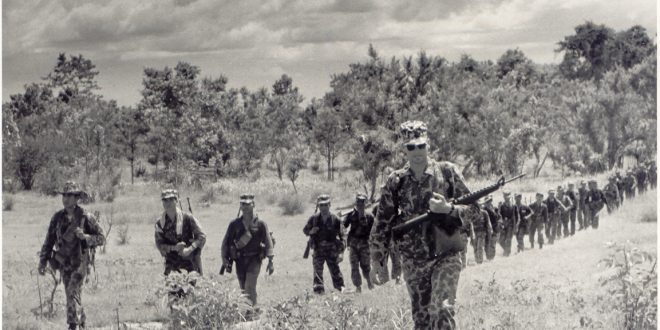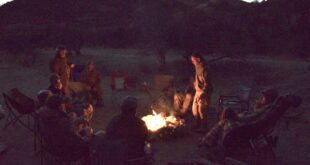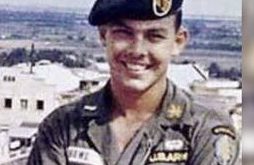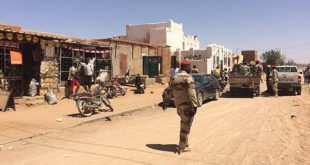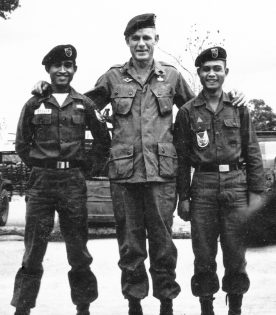
Cowboy was handsome, flamboyant, courageous, clever, and cruel. He got his nickname from the Green Berets who worked with him in the Highlands of South Vietnam in the 1960s. “You’ve got to take the bad with the good,” one Special Forces captain explained. “And Cowboy is a good interpreter.” But he soon fired the interpreter because prisoners did not fare well when Cowboy was around.
And in the end, Cowboy was murdered by his own side, the Montagnard rebels who hated the generals in Saigon as much as the Communists in Hanoi. The compelling story of a country and a people caught up in a Cold War they couldn’t understand, and which in the end would destroy them.
Cowboy Daniel Ford
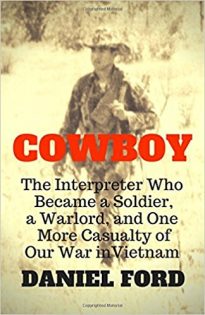
By Jim Morris
This was supposed to be a review, but there’s no way. You can’t review a book in which you are a character, nor a book about an old friend, nor a book BY an old friend, albeit an internet buddy rather than a physical one.
A little background. In June of 1964 Dan Ford, an ex-GI journalist, somehow got himself attached to the Special Forces team at Buon Beng, about four kilometers north of Cheo Reo. The team was commanded by Captain Charley Judge and his XO was Captain Walt Swain. I didn’t know Judge, but Swain was one of my best friends. I had been XO of the team before theirs, in the days when we were doing six-month TDY deployments.
Dan wrote a book about that deployment, called Incident at Muc Wa, and it was a pretty successful book in that it was made into a movie starring Burt Lancaster, Go Tell the Spartans. To my mind it is the best Vietnam movie, certainly the best early one. But when I saw it I didn’t realize that it was based on my camp, that the character who seemed so much like my friend Philippe Drouin was actually based on him, and that the character Burt Lancaster played was based on my old “B” team commander, Rick Buck.
What threw me off was that the team was a MAAG team, and the characters were Vietnamese, not Montagnard. I don’t think Dan knew, when he wrote the book, that “A” teams frequently split up in two camps, and not wanting a bunch of extra characters who did not serve the plot he made up a whole fictional “Ranger” unit with x, y, and z teams. And trying to explain who the Montagnards were to a civilian audience was more than any movie studio wanted to take on at the time.
Over time Dan reviewed War Story on Amazon and I learned Incident at Muc Wa was set in my old stomping grounds. And my old friend Philippe Drouin, aka Y Kdrowin Mlo, aka “The Cowboy,” made such an impression on him that now he has written a book about him. Or at least used him as a focal point for a book about the CIDG program in the Highlands that fills a big gap in knowledge, or maybe two or three big gaps, even for people who served there.
The first third of the book is about Buon Enao and Dave Nuttle who put together the Strike Force there for the CIA. Even today I hesitate to use that acronym. I want to say “the Agency”, or “those guys”. Oh, well. It’s no secret now.
All I knew about those Buon Enao days was anecdotal, from talking to guys who had come back from there. This book has a balanced and comprehensive description. The first commander there from Okinawa, where I was stationed, was Ron Shackleton. And what I knew about Ron Shackleton was that on my 2d SCUBA dive, off Ona Point I had found Ron Shackleton’s Oklahoma State University class ring on the floor of the East China Sea. What are the odds? But I digress. If you served in Vietnam in Special Forces the history of Buon Enao will be interesting to you, and I don’t think it exists anywhere else.
The middle third of the book is about Cowboy, and Buon Beng, and Dan and Walt Swain, and Judge’s team. I have no objectivity there at all. I was constantly comparing his description of the Highlands with my own, his description of stuff that happened, like Cowboy’s bringing my CO, Crews McCulloch, the plans for the Montagnard Revolt of 1964, Crews taking it to Saigon, and not being believed, until the Revolt. There’s a good description of a long patrol he went on, one which ran directly counter to the concept of operations our team had developed. He doesn’t say that, because he probably did not know it, but it certainly tainted my perception of that patrol.
But the book accurately describes Cowboy, his sense of style, his charisma, and the fact that he was the most famous Cong Killer in the Highlands at the time. I’m not objective about the guy. As it says in my book and this one, I loved him like a brother. Every major success I had, organizing the best intel net in II CTZ, the ambush that brought down an advanced party for the NVA invasion of that year and the next, and from then on, none of that would have happened without our relationship. My contribution to the formation of that great intel net was to shout, “Hey, Phil! Go hire some spies.” My contribution to the ambush of that advanced party was to lie through my teeth to a collaborating district chief as to where we were going. Cowboy couldn’t have got away with that, but I could. I got a Bronze Star for that ambush, for which he hired the agent who steered us to the right trail, organized the ambush party, and probably triggered the ambush. I think he got a $25.00 bonus.
See, none of that’s in the book, so this isn’t a review. It’s sort of a hybrid of review and reminiscence.
I have one correction to make. Apparently Dan did not meet Kpa Doh, who was senior interpreter at Buon Beng. He must not have been there at the time, maybe off on FULRO business. So, he confuses him with Little Cowboy, another younger interpreter, who styled himself after Philippe, but didn’t have the chops. On page 95 there’s a pic with Kpa Doh in the middle, listed as an unidentified FULRO activist. Kpa Doh became a great FULRO commander, and Cambodian Army major. Not enough credit is also given to Nay Luette, who was a better operator than Cowboy, though without the charisma.
Something else that I wish was in the book, but isn’t, is what happened to Walt Swain, which is the saddest Vietnam story I know. Dan mentions finding his name on the Wall, but doesn’t know how it got there. Walt went home a bit early from that TDY tour, because his wife, Hilda, developed tubercular meningitis. He had to leave to take care of her daughter, his adopted daughter, Susie. Hilda was a bit older than Walt, and her first husband had been killed in the Korean War. Walt left Oki, diverted from the Infantry Officer’s Career Course with a “compassionate transfer” to the 5th of the 7th Cav at Ft. Carson, to be near Hilda, who was in Fitzsimons General Hospital in Aurora CO.
He’d only been there a few months when the 5th of the 7th was gyroed to Vietnam. He was killed in Bong Son, commanding a company, when he should have been at Benning, drawing up plans to defend the Fulda Gap from the Red Menace.
I later heard that Hilda remarried, another soldier. But I also heard he was a colonel, so this one was probably not killed in combat.
The last third of the book is what happened to Cowboy, and to the Montagnards and the Highlands after the fall of Saigon. It’s not a pretty story, but it’s one all of us should know.
Dan has done a pretty wonderful job with this book. It’s full of stuff you probably don’t know about the life you lived.
#
Walt Swain leads a patrol from Buon Beng. Cowboy is at the head of the column.
 Soldier of Fortune Magazine The Journal of Professional Adventurers
Soldier of Fortune Magazine The Journal of Professional Adventurers


